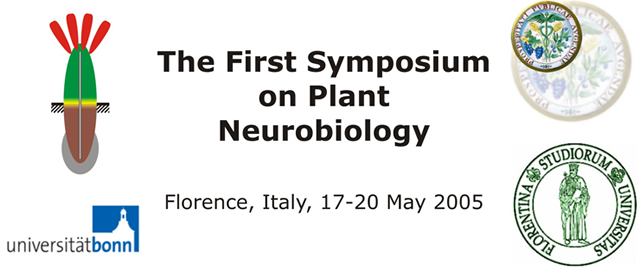
 |
| Mechanoreceptor cells on the tercier pulvinus of Mimosa pudica L. |
| Tamás Visnovitz1,*, Ildikó Világi2, and Zoltán Kristóf1 |
| Department of Plant Anatomy 1 and Department of Physiology and Neurobiology 2, Eötvös Lorand University of Sciences, Faculty of Natural Sciences, Pázmány Péter sétány 1/C, H-1117 Budapest, Hungary |
| *email: visi@ludens.elte.hu |
|
Mimosa pudica
is a famous plant, grown for its curious movement; the leaves close up and drop when touched, and re-opening
within a few minutes. It has become a subject of many studies (even Charles Darwin dealt with the seizmonastic
movement of Mimosa), “but the receptor cells have not yet been identified” (Shimen,
2001). We described a special cell type on the adaxial part of the tercier pulvini. Stimulating these cells, the leaf that contains the pulvinus closed. A very gentle mechanical stimulation, -carried out with a micromanipulator needle - was effective in these cells, but ineffective for any other cells of the tercier pulvinus. Light and electron microscopy were carried out to reveal the connections between cells and the motor cells. The receptor cells and the motor organ have connections through plasmodesmata. Samples were taken from different stages of developing leaves to study the differentiation of the receptor cell. The sensitivity of the receptor cells for mechanical stimulation requires a special developmental stage. The electrophysiological studies supported our receptor cell theory. We measured electrochemical potential in these cells. After mechanical stimulation (about 0,3 sec) hyperpolarisation and then a depolarisation peak was recorded. Repolarisation developed about 1 sec later. Leaves in refracter stadium could not produce those potential changes. We make efforts to understand the function of that cells also at molecular level. |
| [Back] |
Last Update on 06-06-05 by Andrej |
|